We all want a hairstyle that turns heads and feels effortlessly cool. That’s where the wolfcut comes in—a bold blend of shaggy layers and carefree volume that’s taking social media by storm. It’s not just a haircut, it’s a statement that says we’re ready to break the rules and embrace our wild side.
If we’ve ever wished for a style that works with our natural texture and adds instant attitude, the wolfcut is calling our name. Let’s explore why this trend is capturing so much attention and how it could be the fresh update our hair needs right now.
Understanding Wolfcut Hair
Let’s break down what makes wolfcut hair stand out from other styles. This cut blends the jagged layers of a shag with the tousled fullness of a mullet, giving us that effortlessly cool, wild look. Unlike traditional layered cuts, a wolfcut builds height at our crown, letting the rest of our hair fall into choppy layers around our face and neck.
We see the signature feature in its soft, feathered texture. Wolfcuts rely on textured shears and razor techniques, helping us enhance our natural body—especially on wavy or curly strands. Our ends often flip outward or inward, creating movement and volume no matter our hair length.
Next, versatility shines. We can customize the wolfcut for thick or fine, long, medium, or short hair. Most stylists recommend starting with longer layers around our face, then adding chunks throughout for that signature wild-but-polished finish.
Styling wolfcut hair becomes easy. A bit of mousse or sea salt spray scrunched into damp hair often does the trick, adding dimension without fuss. We can let our hair air-dry or use a diffuser for even more lift at the roots.
Wolfcut hair welcomes all hair types, but we get the most dramatic effect on wavy, curly, or voluminous locks. Straight-haired folks still benefit from the bold frame and texture, though we might use more product or styling time to get that perfectly “undone” vibe.
Wolfcut hair lets our personality take center stage by amplifying our natural texture and embracing a relaxed, contemporary aesthetic.
Exploring the Origins of Wolfcut Hair

Let’s look back at where the wolfcut hair trend really started to take shape. Many of us notice its textured layers and wild volume trace their roots straight to two iconic decades. In the 1970s, shag haircuts made waves by embracing choppy layers with tons of movement, which pop stars and actors popularized. Moving into the 1980s, we find the rebellious mullet and messy, rock-inspired styles dominating punk and glam metal scenes. Hair was all about attitude, with volume and edge taking center stage.
While Western culture set the tone, the modern wolfcut wouldn’t exist without influence from South Korea. K-Pop singers in the mid-2000s took inspiration from vintage shags and mullets, updating the look with a youthful twist. Quickly, this sharp yet soft style gained traction in K-culture, setting the stage for its global journey.
Social media fueled the next phase. Celebrities and influencers started sharing their own wolfcut transformations on TikTok, Instagram, and Facebook, reaching millions in just a few months. Suddenly, everyone wanted that effortless blend of volume at the crown and sharply tapered ends. People gravitated toward its gender-neutral vibe and the way it plays nicely with all hair textures.
Nowadays, those iconic layered textures, curtain or blunt bangs, and face-framing choppy ends define the wolfcut. Every time we spot someone with that signature volume and untamed style, we’re seeing a blend of rock legends, K-Pop innovation, and viral digital culture coming to life.
Identifying Key Features of Wolfcut Hair

Spotting a true wolfcut is easy once we know what to look for. Let’s break down its most defining elements.
Shaggy Layers
Every wolfcut centers on uneven layers that really stand out. Typically, we see choppy, messy layers up front and at the crown, while the hair at the back stays longer and looser. These layers create a wild, untamed silhouette, instantly setting the wolfcut apart from smoother styles.
Wispy Bangs
Many wolfcuts bring some kind of face-framing fringe into the look. Sometimes that means a full set of curtain bangs, while other times it’s just subtle, short pieces blending into the sides. We love how these wispy touches highlight cheekbones and soften the cut, giving the whole style some extra dimension.
Textured Volume
Nothing defines the wolfcut’s energy quite like all that volume and body. Using short, top layers in contrast with elongated back strands automatically adds height and shape. We often use light mousse or a texturizing spray to amp up this texture, delivering a messy, lived-in feel that’s effortlessly cool.
Choosing the Right Wolfcut Hair for Your Face Shape
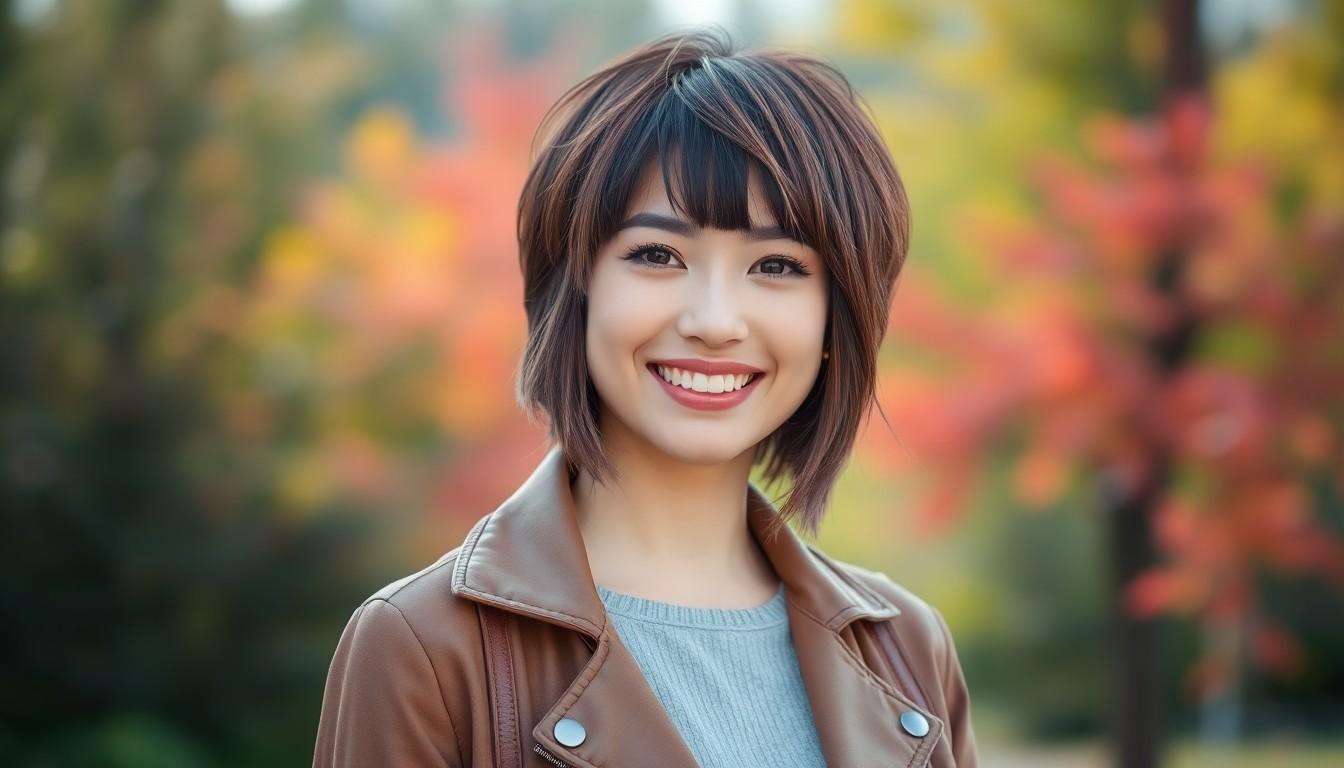
Finding the perfect wolfcut means matching those signature layers and bangs with our unique features. Let’s talk about how we can flatter every face shape with the right adjustments.
Round Face Shapes
For round faces, we want our wolfcut to create some length and add balance. Starting with more height on top, we can use longer layers up high and keep the sides slightly shorter. That way, our features won’t look too wide. Choosing low-tapered fringes helps soften the look. We keep layers away from the cheeks, which stops the face from appearing fuller. By framing with longer layers around the face, we elongate our shape and maintain a bold, trendy finish.
Oval Face Shapes
With oval faces, we’ve got ultimate styling freedom. Practically any wolfcut variation shines here, whether it’s long and textured or a sleeker, shoulder-length style. Experimenting with both bold bangs and subtle layers, we’ll always find the right harmony since oval faces adapt easily to volume and angles. Hardly any adjustments are needed—so we can get creative and personalize our wolfcut with confidence.
Square Face Shapes
If we have a square face, softening those strong jawlines is key. Adding soft bangs and short top layers works to round out the edges. Cutting layers to the jawline, we gently blur the pronounced corners and create a more oval appearance. Bringing in a textured fringe, we balance and soften our overall look. The result: a modern, flattering style that highlights our best features without harshness.
Heart Face Shapes
For heart-shaped faces, soft fringes help reduce the width at our forehead. Placing layers around the chin establishes a more balanced proportion. Opting for face-framing bangs, we open up the chin and avoid heaviness at the top. When we go for a trendy low fade mullet or add extra chin-length layers, our wolfcut flows seamlessly with the natural heart shape. We’ll notice a lift and openness that plays to our strengths and keeps the look on trend.
Styling Tips for Wolfcut Hair
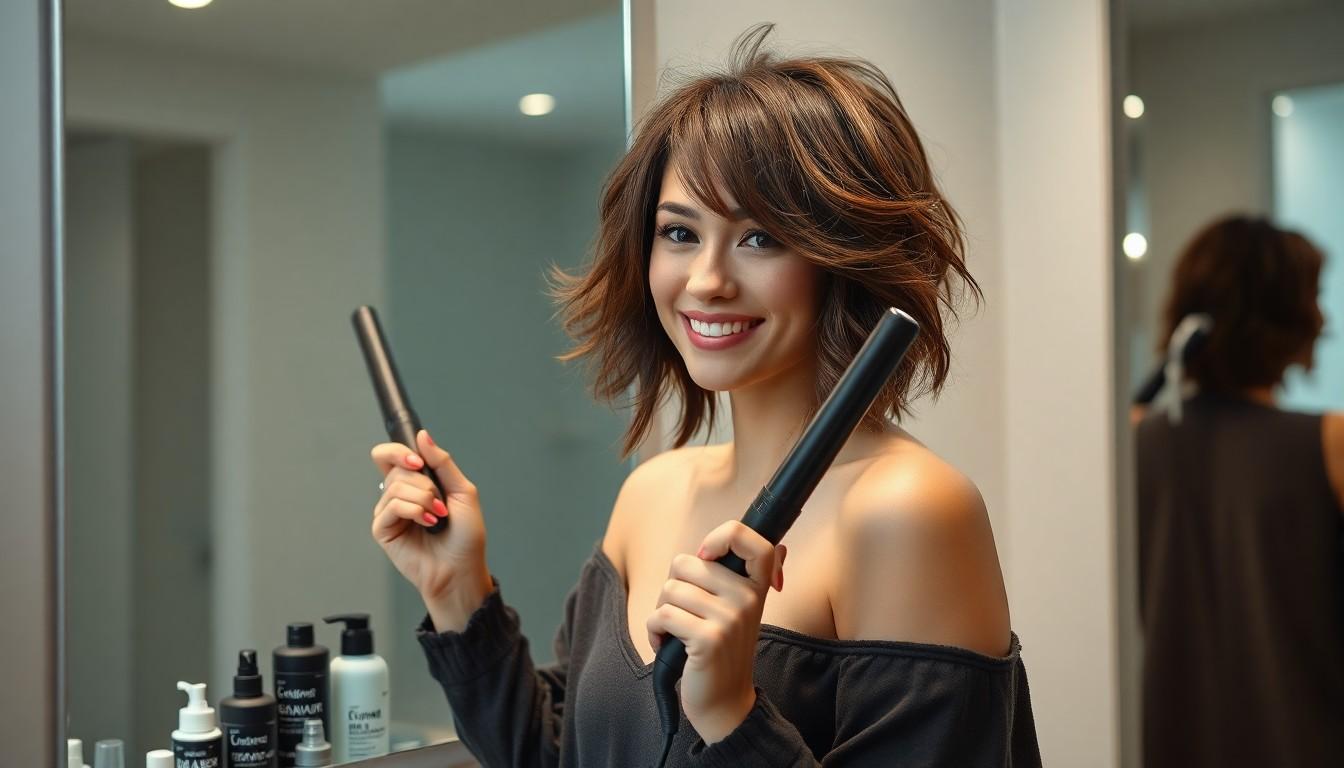
Wolfcut hair thrives on natural body and shape, but smart styling elevates its iconic layers and volume. Let’s jump into our favorite ways to make every wolfcut turn heads, whether you’re getting ready for a chill day or a bold night out.
Heat Styling Techniques
We love using a curling wand when we want effortless, beachy waves—just wrap small sections around the barrel, leave the tips out for a lived-in finish, and switch up curl directions for a natural vibe. Sometimes, straightening with a flat iron creates super sleekness, but we find it best to keep things a bit undone, so hair doesn’t lose its signature wild feel. Grabbing a diffuser really helps us manage frizz and add shape while keeping heat damage minimal, especially with wavy or curly wolfcuts.
Adding Texture and Volume
Nothing gives us that messy-chic look quite like a good texturizing spray; one or two spritzes and layers instantly feel fuller and edgier. Other times, we reach for a volumizing mousse or root lift spray, applying it to damp hair and scrunching as we go for extra bounce and separation in our layers. We sometimes work in a layer separation cream, which adds definition and makes every choppy piece stand out on its own. Dry shampoo also does wonders, especially when our wolfcut needs a lift between washes—it brings airy volume without extra weight.
Recommended Hair Products
| Product Category | Example | Why We Use It |
|---|---|---|
| Volumizing mousse/root lift | Any high-quality mousse, root sprays | Builds instant volume and body |
| Texturizing spray | Any reliable texturizer, Bed Head Oh Bee Hive! | Creates undone, lived-in finish |
| Light hold mousse | Moroccanoil Curl Control Mousse | Defines and shapes scattered layers |
| Layer separation cream | Redken Rewind | Enhances definition in each layer |
| Dry shampoo | Bed Head Oh Bee Hive! | Boosts volume and absorbs oil |
| Diffuser | Universal fitting diffuser | Controls frizz and shapes texture |
Choosing the right products makes all the difference. Moroccanoil Curl Control Mousse, for example, keeps our curls bouncy and in place, while a quick spray of Bed Head’s Oh Bee Hive! revives our roots. We also swear by Redken Rewind for pulling extra definition out of those iconic wolfcut layers. With the right lineup, it’s easy for our wolfcut hair to look effortlessly wild and fully styled every day.
Maintaining Wolfcut Hair for Lasting Results

Let’s keep our wolfcut looking as bold and fresh as the day we left the salon. Consistent care makes all the difference in preserving those signature choppy layers and carefree texture.
Regular Trimming
Trimming on schedule is essential for our wolfcut. We notice the best results when we trim short hair every six to eight weeks, and for longer wolfcuts, eight to ten weeks works best. By keeping up with regular trims, we prevent split ends and maintain the intentional shape of those wild layers and soft bangs. Booking trims at the right interval really helps our cut stay full and lively.
Hydration and Conditioning
Each day, brushing goes a long way to keep our layers tangle-free and our volume amped up. We find it helps even more when we use a detangling spray, especially for thick, curly, or wavy hair types. Leave-in conditioner brings out the best in our ends if our hair is thick or textured—though we skip this step if our strands are finer, so they stay bouncy and light.
Choosing a volumizing shampoo partnered with a lightweight conditioner makes styling easier without weighing us down. We use a microfiber towel or even a soft tee to gently soak up water after we shower, which helps us avoid frizz and keeps our strands healthy.
Heat protectant spray is a real lifesaver whenever we style with hot tools, ensuring we keep our hair shiny and strong. Finally, lightweight mousses and texturizing sprays give our layers an extra boost of volume and definition, while we steer clear of heavy products that can flatten or grease up our look.
Inspiring Wolfcut Hair Ideas for Every Length
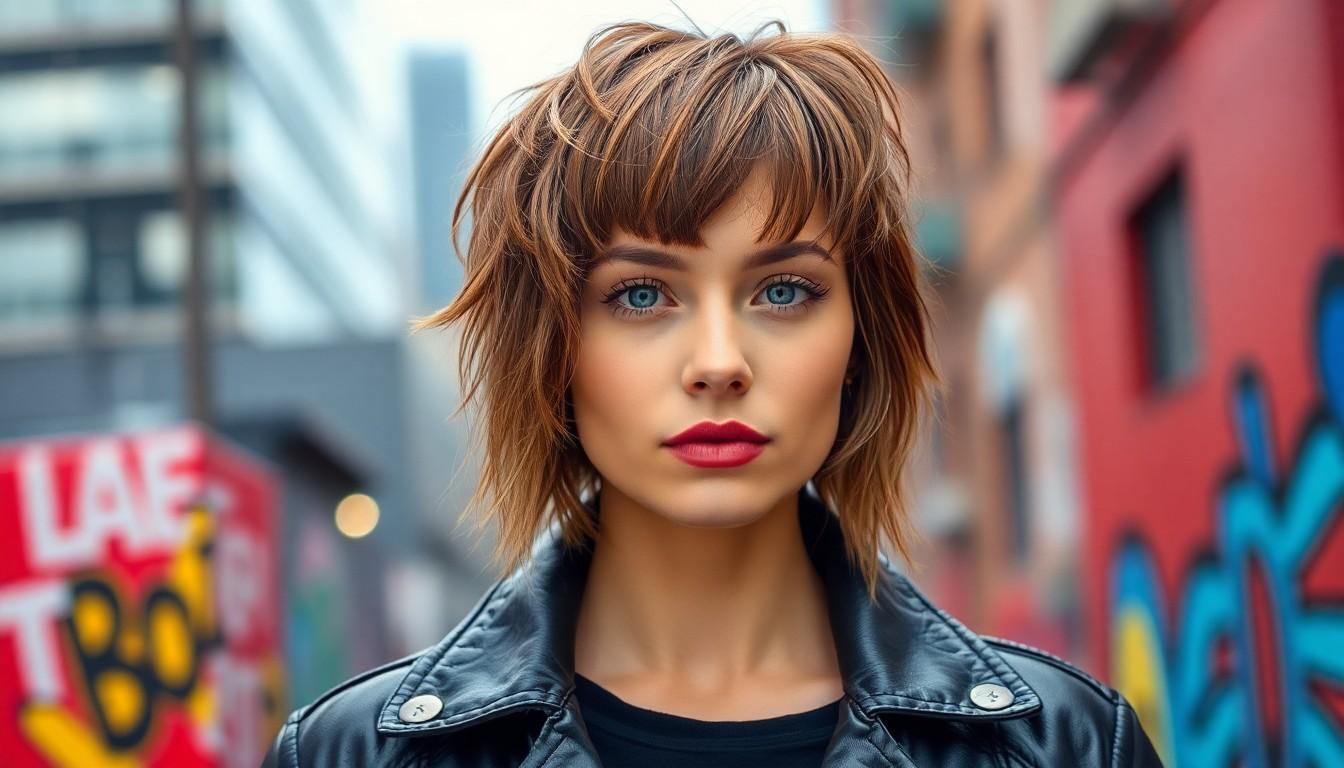
Ready to transform your hair? Let’s explore how the iconic wolfcut can amplify texture and volume at every length.
Short Wolfcut Styles
Imagine your hair cut to the chin or just above your shoulders, layered in a carefree, textured style. We see this short wolfcut shining when paired with shorter face-framing layers and feathered, choppy bangs. Many with fine or thin hair choose this cut because it adds volume and playful bounce without weighing hair down. Try it on curls for a look that’s edgy and fashion-forward, fusing your hair’s natural volume with an avant-garde finish.
Medium-Length Wolfcut Looks
Medium wolfcuts work magic on curly and straight textures, offering endless versatility. Notice how the mix of wispy and choppy layers brings body and effortless movement to the hair. These layers, combined with tousled bangs, create an easy “lived-in” style that’s both carefree and chic. We recommend this look if you want to show off your natural curls—those layers really highlight your texture.
Long Wolfcut Variations
Amping up the wolfcut’s signature drama, longer versions stretch into a lob that sways with every turn. Wispy, cascading layers fall to the shoulders or below, improving natural movement and fullness. Sometimes, we’ll take inspiration from the mullet and blend in longer, piecey back layers for that edgy, retro-modern vibe. With bangs—blunt or curtain—this style flatters almost every face shape and makes fine hair look thicker and fuller.
Here’s how clients embrace the wolfcut: they choose lengths and textures that reflect their style, letting the cut’s built-in layers do the heavy lifting for shape and volume.
Celebrity Inspiration: Famous Wolfcut Hair Moments
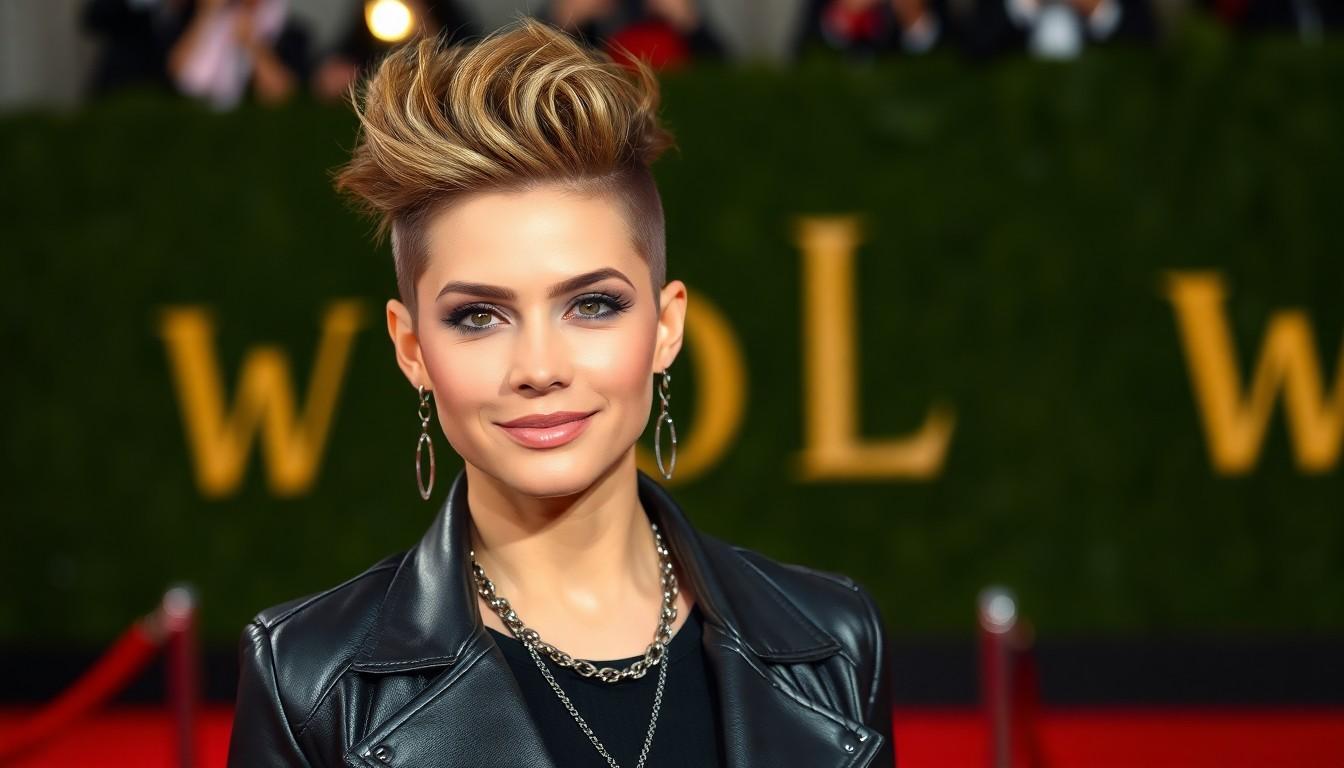
We often notice the biggest hairstyle shifts coming from celebrities who love taking risks with their look. Some style icons set trends just by stepping out with a new cut, and the wolfcut’s rebellious energy fits right in with their personalities. Social media platforms, like TikTok and Instagram, keep us up to date as stars and influencers embrace wild, choppy layers and messy textures, building buzz around this bold statement look.
Scrolling through recent red carpets and photo shoots, we can see that celebrities popular for experimenting with hair—think K-pop artists or those channeling 1980s glam—gravitate toward the wolfcut for its hybrid of shaggy and mullet-inspired volume. Volume at the crown paired with wispy, face-framing layers often defines these celebrity transformations, showing off a carefree but put-together vibe.
Sometimes, artists bring the wolfcut into the spotlight when they post dramatic before-and-after shots. Other times, TikTok creators mimic their favorite star’s look, sharing tutorials that spotlight the unique, tousled finish of a true wolfcut. Even without official endorsements, we find celebrity inspiration in the way they style their own natural hair texture—straight, wavy, or curly—proving the cut is as versatile as it is eye-catching.
Influencers, actors, and musicians alike show us the freedom that comes with adapting shaggy, choppy layers, perfect for anyone craving a change. Every time a celebrity rocks a wolfcut, we’re reminded that it’s more than just a trend—it’s a creative move, a chance to amplify individuality, and a moment that shapes what’s next in hair fashion.
Frequently Asked Questions About Wolfcut Hair
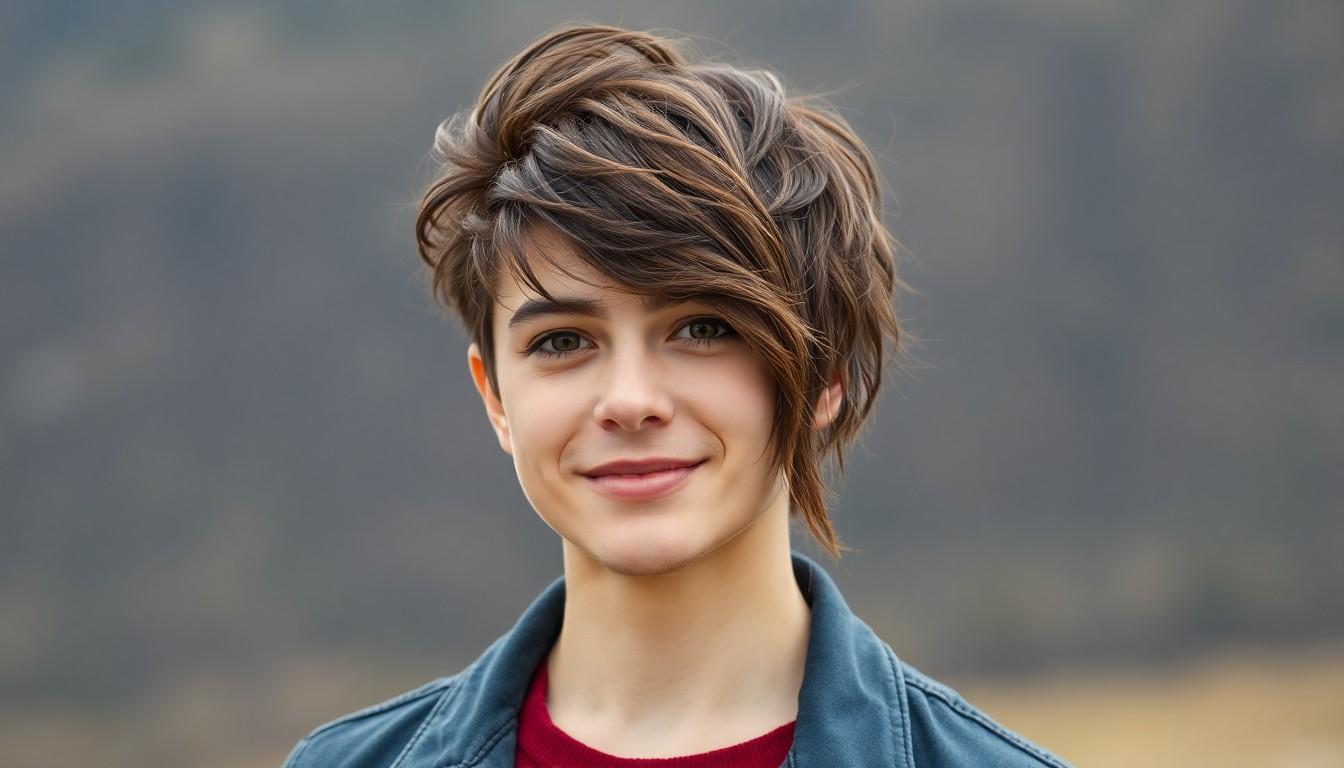
Ever wondered what exactly sets a wolf cut apart from other styles? This unique look blends the gutsy vibes of a shag with the length and attitude of a mullet. We see short, choppy layers stacking volume at the crown, while longer, untamed sides give off that iconic wild silhouette.
When it comes to hair length, stylists usually recommend at least a chin-length base to really showcase those dramatic layers. Most of us find medium or long hair works best, since layered texture and movement are easier to achieve with more length to play with.
Curious about hair type compatibility? The wolf cut embraces diversity. It suits wavy and curly hair especially well, using products like curl enhancers or texture tonic to pump up texture. Straight hair isn’t left out either—adding a little texturizing spray or sea salt mist can fake natural movement and create effortless definition.
Not sure how to style wolfcut hair? We love how little effort it requires. For curly or wavy hair, a quick scrunch with Aveda Be Curly Curl Enhancer or volumizing mousse lets the natural pattern shine. Air-drying works for a pillowy effect, but a diffuser can dial up the bounce. We find matte pomade handy for refining edgy tips and keeping layers separated.
Looking for a way to make the look your own? Bangs play a huge role. Curtain bangs or choppy fringe can frame the face beautifully, completing the bold, contemporary vibe. Many of us opt for textured or face-framing bangs to emphasize features and add interest.
Wondering about the actual cut? Stylists focus on textured layers at the crown, blending into choppy mid-lengths and ends. Razor and point cutting bring out movement, keeping the look soft, edgy, and never blunt.
Worried about upkeep? Regular trims are our secret for keeping wolfcut layers crisp and intentional. A visit to the salon every two to four weeks maintains the signature shape and prevents layers from growing out awkwardly.
Considering personalizing your look? The wolf cut offers serious versatility. Styles like the Korean wolf cut or Asian wolf cut adapt the original for different hair types, textures, and even cultural trends. We’ve seen everything from super-shaggy rock styles to subtle, polished versions, making it easy to find our perfect match.
Conclusion
Choosing a wolfcut means embracing a hairstyle that’s both expressive and adaptable. It lets us showcase our individuality while keeping our look fresh and modern. Whether we’re inspired by celebrity trends or want to experiment with layers and texture the wolfcut offers endless creative possibilities.
With the right cut and a few styling tricks we can enjoy a bold new look that’s easy to maintain and always on trend. If we’re ready to make a statement this is the perfect time to try the wolfcut and let our hair reflect our unique personality.
Frequently Asked Questions
What is a wolfcut hairstyle?
The wolfcut is a trendy hairstyle known for its choppy, shaggy layers and voluminous, tousled look. It combines elements of the 1970s shag and the 1980s mullet, creating a wild, textured silhouette that enhances natural hair movement and personality.
How is the wolfcut different from a mullet or a shag?
While the wolfcut shares features with both, it stands out for blending the mullet’s length and attitude with the shag’s layered texture. The result is a bold, face-framing cut that’s softer and more wearable than a traditional mullet.
Who does the wolfcut suit best?
The wolfcut is versatile and can be customized to suit most face shapes and hair types. It’s particularly flattering for wavy and curly hair but can also add texture and volume to straight hair. Face shape adjustments help enhance individual features.
What length of hair do I need for a wolfcut?
You’ll need at least chin-length hair to showcase the wolfcut’s signature layers and texture. The look works well on short, medium, and long hair, and can be adjusted to suit your personal preference and style goals.
Can I get a wolfcut if I have straight hair?
Yes! While the wolfcut looks especially dramatic on wavy or curly hair, straight-haired individuals can achieve a bold, textured effect with this cut. Using texturizing products and light styling helps amp up the natural volume.
Do I have to get bangs with a wolfcut?
Bangs are a common feature of the wolfcut, but they’re not mandatory. Many people choose soft curtain bangs or choppy fringes to frame their face and enhance the cut’s dynamic vibe. You can tailor the bangs to your style preference.
How do I style a wolfcut at home?
Styling the wolfcut is easy—just use a texturizing spray, volumizing mousse, or sea salt spray to bring out its layers and natural volume. For added definition, you can use a curling wand or flat iron for soft bends or waves.
How often should I trim a wolfcut?
To keep your wolfcut fresh and maintain its distinct shape, aim for a trim every 6–8 weeks. Regular trims prevent split ends and help preserve the choppy, voluminous layers that define the cut.
What are the best products for a wolfcut?
Look for lightweight mousses, texturizing sprays, volumizing shampoos, and leave-in conditioners. For thicker hair, detangling sprays help manage texture. Always use a heat protectant if you’re styling with hot tools to maintain healthy hair.
Are there different versions of the wolfcut?
Yes! The wolfcut comes in various styles, including Korean or Asian variations, which are slightly softer and tailored for different hair textures. You can customize length, bang style, and layer intensity to match your personal taste.
Who made the wolfcut popular?
The wolfcut’s surge in popularity comes from celebrities, K-Pop artists, and influencers who showcased the style on TikTok and Instagram. Social media has played a huge role in making the wolfcut a mainstream, trendsetting choice globally.







